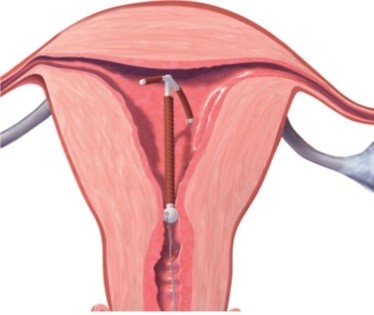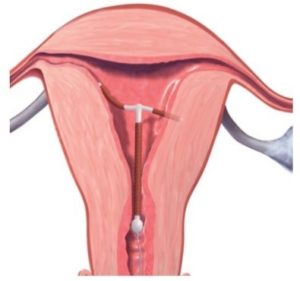
Contraception is the requirement of today’s world. Your gynecologist may help you in choosing methods of contraception best suited for you. These methods are different for different people. Efficiency is also different for every method. Its failure is an emergency as it may result in conceiving. One of the contraception failures is embedded IUDs (intrauterine devices) or missing thread. The original position of a copper T or hormone-releasing IUD is in the fundal wall of the uterine spaces. Its malpositioning is a failure and needs to be checked.
What are IUDs?
These are intrauterine devices placed in the uterine cavity by experts to prevent pregnancy. These are usually “T” shaped loaded with copper and hormones. Placement is generally at the fundus of the uterus.
What is the malpositioning of IUDs?
The IUD should be placed at the fundus of the uterus, with the arms of IUD fully separated and stretched toward the uterine cornua. The vertical portion of the “T” should extend straight in the uterine cavity. Malpositioned IUDs may be described as follows:
Located in the lower uterine segment or cervix.
Rotated. See the below figure

Embedded in the myometrium (inner wall of the uterus) one or both arm of IUDs. See the figure below.

Partially expelled, if the lower part of IUD is out of cervical external os.
Protruding outside the uterine serosa or wall and entering the abdominal cavity (perforation of the uterus).
What are the Symptoms of embedded IUD?
An IUD displacement, expulsion or embedded may cause physical symptoms in some cases, these are the following:
• Heavy bleeding.
• Severe cramping.
• Abnormal vaginal discharge.
• Sudden lower abdomen pain.
How IUDs can be removed?
IUD removal is a very easy procedure done by experts on an indoor basis. To remove the IUD, the gynecologist holds the thread by forceps and pulls it out. If it doesn’t come out by this method then it may require hysteroscopy to visualize and to take it out.
How hysteroscopy is performed?
You may require a hysteroscopy to remove the IUD when it gets hooked in your uterine wall. It’s a non – invasive procedure. During this method, your doctor will apply speculum to make space in your genital cervix to insert a Hysteroscope. The Hysteroscope allows tiny tools to enter your uterus to pick up IUD and take it out. You may need anesthesia for this method.
A missing thread can be managed calmly. Don’t panic and consult your doctor for its removal. Hysteroscopy is available at many gynecological clinics. For further information regarding endoscopes please visit:- https://diasurge.com/

